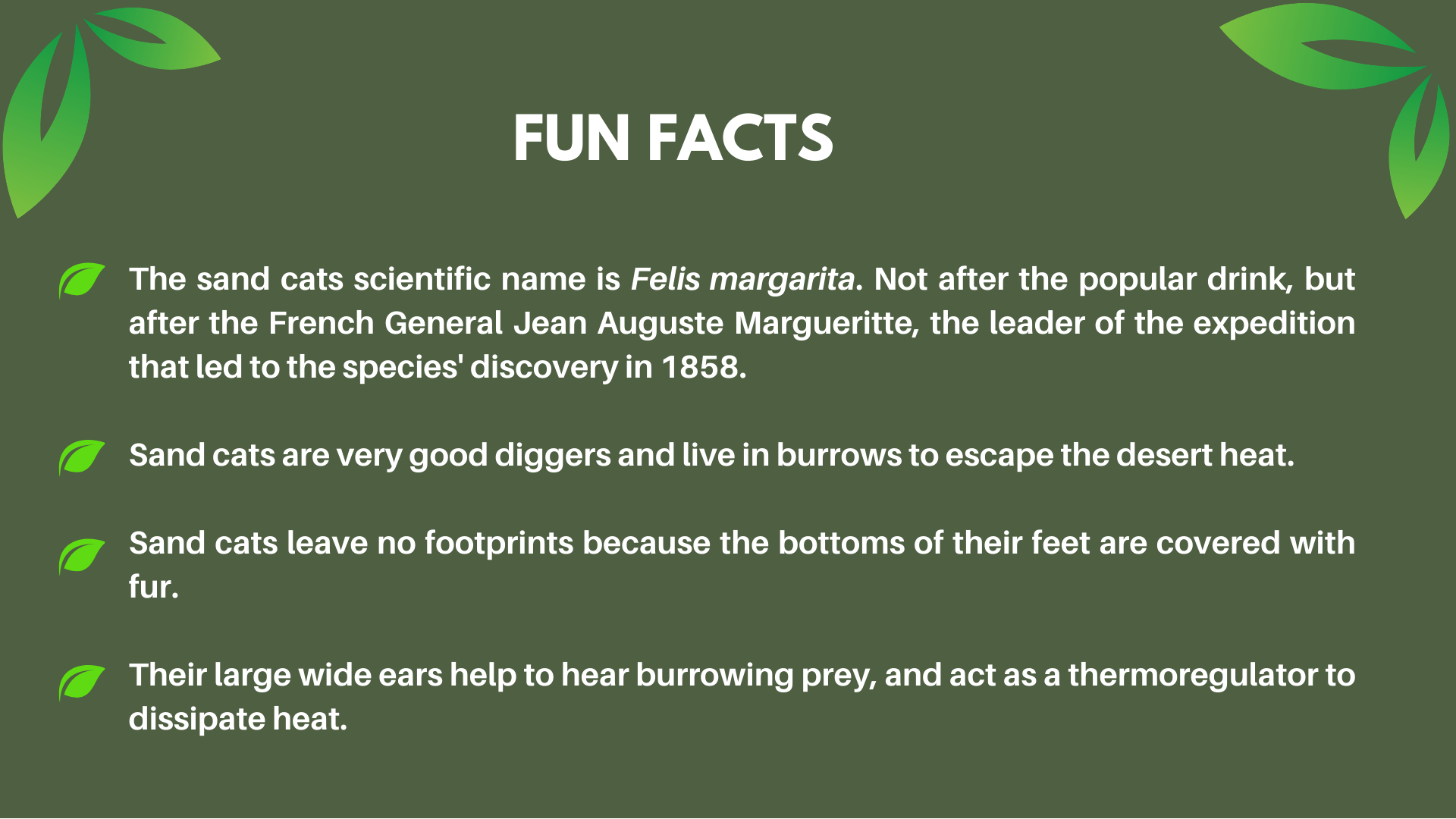Deserts & Forests of The World
Sand Cat
Small but mighty.
Sand cats may only weigh a few pounds but they are fierce hunters. Their agile cat movements help to take down even venomous snakes. They first stun the snake with blows to the head using its paws and claws, before biting their neck.

..
.

Sand cats eat primarily small rodents, occasionally hares, birds, spiders, insects and reptiles. Using their large ears, they can detect prey even under the desert sand. Like many desert dwelling species, sand cats can survive without drinking water for weeks at a time. They get the moisture they need from their prey but will drink water if available.
Sand cats are mainly nocturnal and crepuscular (active at dawn and dusk) animals, avoiding the intense heat of the desert by hiding in burrows. They rely on their ability to dig to create shelter from extreme weather.
They are one of the more difficult cats to study in the wild. Their foot coverings allow them to walk on sand without sinking, leaving their footprints nearly invisible. They have learned to crouch down and shut their eyes when a light is shone on them, which prevents the light from reflecting their eyes for tracking. That combined with their protective coat color makes them blend right into their desert habitat.
.
.

.
_____________________________________________________________________________________________________________________________________________________

How sand cats are doing in the wild
Although sand cats are not listed as endangered, they are still affected by the same human actions that threaten many other animals. Habitat degradation from population growth and settlement is a major threat to the sand cat. Livestock grazing is also encroaching on their habitats. Not only do sand cats need adequate habitat but their small mammal prey depends on having adequate vegetation as well for food and shelter which affects the entire desert ecosystem.
Other threats include the introduction of feral and domestic dogs and cats, creating direct prey competition. They also introduce disease susceptible to sand cats.
.
How you can help sand cats
- Volunteer at the Chattanooga Zoo. As a volunteer you can help us talk with our guests about sand cats and why they matter. Instilling a sense of awareness about sand cats helps in our mission for Zoo guests to learn more in the hopes they will help save them in their wild habitat.
- Chattanooga Zoo participates in the Association of Zoos and Aquariums' Species Survival Plan (SSP) for sand cats. The mission of an SSP program is to cooperatively manage threatened or endangered species populations within managed-care facilities. By supporting Chattanooga Zoo, you are our ally in saving and protecting wildlife worldwide.
.
.
.
.

.
.







